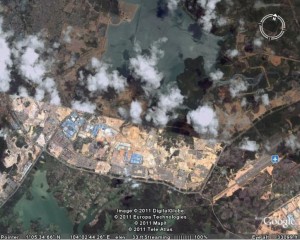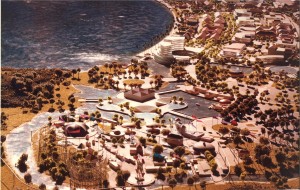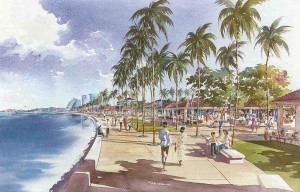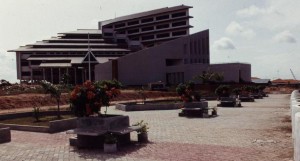Concern for the state of our public works infrastructure seems to have percolated to the forefront of current political discourse. The web-based news and commentary site The Infrastructurist, for example, recently presented their “First Annual Infrastructurist Forum†on the future of U.S. infrastructure, attracting statements from such luminaries as Representatives John Mica (R-Fl) and Nick Rahall (D-WV), Chairman and Ranking Democratic Member, respectively, of the House Transportation and Infrastructure Committee; real-estate development expert turned pundit Chris Leinberger of The Brookings Institution; and Forbes magazine columnist Joel Kotkin. Reports on both the national political scene and local issues in The New York Times, TheWashington Post, the Los Angeles Times, and other print media outlets feature the term almost daily. There has not been so much attention to the topic since the months following the 1981 publication of America in Ruins: Beyond the Public Works Pork Barrel, by Pat Choate and Susan Walter.
Choate and Walter warned that government spending on infrastructure had failed to keep pace with the nation’s needs, causing our public facilities to wear out faster than they were being replaced.  The book sparked national debate about not only how much we should be investing in infrastructure, but also whether such public investment is worth making.
Suggesting that we were not then spending enough, Bill Clinton’s 1991 presidential campaign included a promise to “rebuild America,†but an $80 billion program proposed early in his first term never made it through the Congress. A recent Congressional Budget Office (CBO) report shows that total annual public spending for transportation and water infrastructure was higher in 2007 than in 1991, when viewed as a percentage of our Gross Domestic Product (GDP) the amount has declined steadily for four decades. (Public Spending on Transportation and Water Infrastructure, November 2010) Whether or not America was “in ruins†in 1981, the American Society of Civil Engineers in 2010 issued a Report Card for America’s Infrastructure with an overall GPA of “D.â€
On the question of whether public investment in infrastructure is worthwhile, economists have bickered about the measureable rate of return on investment. Such academic heavyweights as David Aschauer, Douglas Holtz-Eakin, Alicia Munnell featured prominently in the late 1980s and 1990s.  A truce was called (or perhaps interest in an unwinnable dispute simply flagged) with widespread agreement that the rate of return, observed at the level of the nation or large regions, had been at least positive in recent decades. Researchers continue to document examples of quite reasonable returns. (For example, nearly 16% on transportation investment; Alfredo M. Pereira and Jorge M. Andraz, 2005, “Public Investment in Transportation Infrastructure and Economic Performance in Portugal,†Review of Development Economics 9:2 (177-196))
So an argument can be made that public investment does yield net returns. But how much investment is needed to maintain productivity and growth? Walter Rostow’s seminal book The Stages of Economic Growth: A Non-Communist Manifesto appeared in 1960, asserting that economies launching into modern industrial growth show investment rates rising from about 5% of the national income to 10% or more. The CBO study shows U. S. investment in transportation and water infrastructure has been below 2.5% for some years; allowing for spending on other infrastructure (such as waste treatment facilities or schools, for example) would certainly increase this percentage, quite possibly to a level within Rostow’s range.Â
Economist A. O. Hirschman, at about the same time that Rostow’s work was being completed, argued that temporary shortages of infrastructure can be tolerated, that facilities can be built later to catch up with demand derived from private industry’s growth. (The Strategy of Economic Development, 1958) He went on to suggest that what retards economic advance in most cases is a shortage of management capability rather than physical facilities. More recent analyses have provided supporting evidence. (Charles R. Hulten, “Infrastructure Effectiveness as a Determinant of Economic Growth: How Well You Use it May Be More Important than How Much You Have,†1996 and 2005)
What has been neglected in all of the analyses that I have seen is an explicit consideration of maintenance spending, as distinct from investment. Infrastructure, like most engineered systems, requires periodic care to keep it functioning properly. Leaves, trash and other debris clog drains that channel rainwater away from roadways must be cleaned out. Filters that remove silt and bacteria from drinking water must be flushed. The costs of such maintenance effort typically are accrued in different accounts from those the represent “investment.â€Â But if maintenance is neglected, the quality of services and longevity of facilities will be impaired. My discussions with people who manage maintenance in public works agencies suggest that maintenance budgets are often squeezed, forcing neglect.
In the absence of data and solid analysis for estimating appropriate levels of spending, I have found that many facilities managers use as a rule of thumb that about 2% of the current replacement value of the facility should be spent annually on routine maintenance. (For example, see Committing to the Cost of Ownership: Maintenance and Repair of Public Buildings, 1990, The National Academies Press, the report of a study I worked on with a number of government facilities managers.) Spending less (assuming the money is used effectively) risks premature deterioration and failures. Failure of the Interstate 35W bridge collapsed in Minneapolis in August 2007 and rupture of a 66-inch water main in suburban Washington, DC, in December 2008 are two of many examples of such risks becoming reality.Â
The point is, we really do not know how much we need to spend for our infrastructure. But the evidence suggests we need to spend more than we do now.





